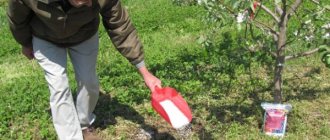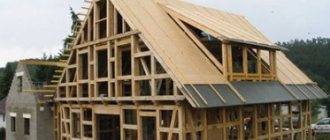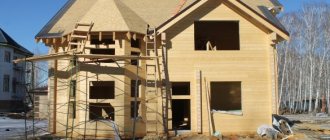High air temperatures coupled with low humidity are a real hell for ornamental and garden plants. Prolonged periods characterized by such “symptoms” are called drought. For most plants, nothing worse can be imagined, and even winter frost is not as terrible as prolonged thirst. However, in the encyclopedia of an experienced gardener there are many representatives of the flora that are ready to easily endure drought.
Therefore, if endless sunshine is a common occurrence in your region, check out the list of trees and shrubs presented below. Why torment plants that are not drought-resistant if they can be replaced at any time with those that are completely fearless in the summer sun?
yellow acacia
Yellow locust tops the list of the most drought-resistant shrubs and trees. It does not need fertilizer at all and thrives on sandy soil. Professionals recommend feeding exclusively young trees, because “elderly” representatives of this genus do not need additional nutrients at all.
The only thing that should never be forgotten when growing yellow acacia is the need to prune the tree. Pruning should be done twice a year. Otherwise, the bottom layer of the tree will become very exposed.
Bonsai
It is a miniature copy of a tree. The idea of growing gnomes in pots came to us from China. Asian bonsai is not just a small flower in a pot. This is a work of art and the embodiment of living sculpture. Growing miniature trees is a kind of ritual to create a smaller copy of nature.
Growing bonsai requires a lot of skill and patience. Coniferous, fruit trees and specimens with small, fluffy leaves are suitable for cultivation. Beautiful bonsai trees are made from climbing willows and birches. The rooted seedling is planted in a pot. Grass is sown around it for aesthetics. For several years, the spruce or birch tree will be well looked after, giving it the desired shape. This is achieved by pruning old branches and cutting off new shoots. In this case, the bonsai should be watered at the right time and fed as needed. By observing the shoots and regulating their growth, you will eventually end up with a graceful mini dwarf tree.
Aralia
Aralia has a rather unusual appearance, and this is where the secret of its decorativeness lies:
- trunks are perfectly straight and unbranched;
- the aralia along the entire length of the trunks is covered with large spines, visually reminiscent of pink thorns;
- The triply pinnate leaves are simply huge and can reach 100 cm in length.
Aralia blooms with paniculate inflorescences, which consist of cream-colored flowers. The flowers smell excellent, exuding aroma for several kilometers around them. Aralia cannot grow and develop without light. Long-term drought is much more attractive for her than a shady or semi-shady location. You only need to be careful when transplanting this representative of the flora: the process itself is not terrible for aralia, but its roots are quite fragile, so you need to be extremely careful not to damage them.
If you want to create an irresistible hedge in your garden, use aralia as the main plant in a single or group planting. And then not a single attacker will dare to overcome this plant fence.
Beautiful examples
An expressive example of a flowering ornamental shrub is shown in the photo. Flowers raised to different heights look very original. But the main advantages of this composition are associated with the stems of the crops included in it.
And here the design effect was used using a thick pink carpet. With its help, you can transform a nondescript gray wooden fence and add elegance to it.
A composition of flowering shrubs can look extremely original. Here is a lush, squat carpet of white flowers. On the left is just a green mass, and in the middle is a neutral gray stone. This winding path serves as a good visual divider.
For more information on caring for and growing ornamental shrubs, see below.
Birch
It is difficult to imagine a person who is not personally familiar with this symbol of Ukraine and Russia. Birch groves are a real asset of the middle zone. A gardener’s desire can easily turn a famous tree into an asset not only for his country, but also for his garden plot. It is pleasant to deal with birch, because this representative of the flora does not care how deep or close the groundwater lies. At the same time, it is not at all picky about the amount of moisture: if you have it, that’s good, if you don’t, that’s fine.
Before the movement of sap through the tree begins in the spring, the birch tree must be pruned. If this tree grows on your site, you should learn how to carry out sanitary pruning, as well as processing to form the crown.
Kalina buldenezh
Viburnum is one of the most common shrubs in the central zone of our country. This is a wonderful plant that is used in cooking and folk medicine. And one of the varieties of viburnum - Viburnum buldenezh - is a valuable ornamental crop.
Kalina buldenezh
The main difference between Viburnum buldenezh is the large white ball-shaped inflorescences that decorate the bush. So large that under their weight the thin branches of the bush bend to the ground. Thanks to its inflorescences, viburnum looks luxurious during the flowering period and attracts everyone's attention.
Flowering viburnum buldenezh begins in June and lasts about a month. When the petals fall, equally beautiful carved leaves come to the fore.
Viburnum is very unpretentious, but there are still some nuances in growing shrubs. The perennial loves moist, loose and nutritious soil, and also prefers partial shade. There is no need to cover it for the winter, but it is better to water it more often in the summer.
Euonymus
The business card of the euonymus is its unusual fruits. They are presented in the form of leathery boxes, which are painted in one of the shades of red. The seeds of the plant are covered with a fleshy substance and look quite strange. The shrub is sensitive to shady locations and requires virtually no watering. Only one thing is important: that the soil in which the euonymus is planted is breathable. Aeration is the only criterion that is really worth analyzing before planting. Below is a short list of landscape design elements in which euonymus can be involved:
- rockery;
- rock garden;
- hedge;
- solitaire planting;
- group planting.
Euonymus is a poisonous plant (with the exception of a few species). In addition, the plant is often attacked by pests. The euonymus is most susceptible to the influence of the euonymus moth.
Bladderwort in landscape design
Bladderwort has earned great popularity for its foliage shades, delicate flowering and high growth rate, thanks to which the shrub quickly grows to its maximum size and can serve as an excellent background or dominate the composition in the landscape design of your site. Varieties with dark shades of foliage are best planted in well-lit areas so that they retain their decorative properties.
will delight its owners with an incredibly rich shade of foliage and contrasting milky-white, sometimes pinkish inflorescences. A one and a half meter lush shrub will be a wonderful accent in your composition or create a contrasting background for bright bushes of barberry or spirea.
Vibrant and striking, it will brighten up any landscape with its showy foliage, spreading branches and lush crown. Closer to autumn, the foliage turns a pleasant golden hue.
Growing up to three meters high with dark red foliage and pale pink inflorescences, it will add charm to your arrangement. The dense foliage takes on a mesmerizing purplish-red hue in autumn.
Privet
Privet is a family of plants that combines two types of shrubs:
evergreen;
- deciduous.
Privet is distinguished by its fruit, presented in the form of a drupe, visually reminiscent of a berry. The plant is not afraid of frost, drought, or heavy rains. It can grow even where the soil has a high lime content. What can we say, if privet is often found on saline soils, which are destructive for most plants.
Privet is ideal for creating composite hedges. The shrub is easy to trim and allows you to turn an ordinary and unremarkable crown into a masterpiece of landscape art of any shape.
How to care for a fruit “mini garden”
The basic rules of care include systematic loosening of the soil, removal of weeds and other vegetation. To avoid the appearance of crusts on the ground, you will need to mulch the soil. Compost is used for such purposes.
Particular attention is paid to the soil during the dry season. To retain moisture, the soil is covered with hay. Mulching is carried out so that the layer is not located too close to the trunk. It is not recommended to apply mulch during wet periods.
Watering
It is recommended to water the mini garden weekly. 2 buckets of water should be added to 1 seedling.
Fertilizers
It is best to fertilize after the soil is moistened. For dwarf plantings, fertilizing with mullein or chicken manure is ideal. It is recommended to dilute mullein with water in a ratio of 1 to 10, and chicken droppings - 1 to 20.
Diseases
Most often, gardeners encounter powdery mildew, mosaic and cytosporosis. The first disease manifests itself in the form of a white powdery coating. This is a fungal disease that progresses quite quickly. Fruits on such trees may not bear fruit and may become deformed. As preventive methods, it is recommended to carry out systematic pruning, remove debris and fallen fruits. Thickening of the crown is not allowed. In spring, it is recommended to spray with Bordeaux mixture. If the plant is damaged, it is recommended to remove all damaged parts and burn them. It is also recommended to use the preparations “Tiovit Jet”, “Topaz”, “Quadris” for treatment.
Mosaic appears as green or white spots on leaves and fruits. This is a disease of viral origin. Leaves may become deformed and development may slow down. Often the disease occurs due to treatment with instruments that are not disinfected. Minor damage can be treated with Karbofos.
Cytosporosis is manifested by brown shades of the crown, the appearance of bumps and roughness. Treatment will only help in the early stages. All damaged areas are removed and burned. Then the trees are treated with Bordeaux mixture, also fed with ash and whitened with lime.
Properly selected dwarf trees for the garden will harmoniously complement a small area, fill it with beauty and provide fruit.
Deytsia
If you want to plant something lushly blooming on your plot, be sure to take a closer look at the action. Surprisingly, this beautiful shrub is not afraid of pests and is completely indifferent to city smog. Smoke and exhaust gases are not capable of destroying it. Prolonged heat cannot do this either.
Dwarf varieties of deutia are most often used to create living borders. But ordinary types of plants can be used in the following landscape design objects:
- solitaire planting;
- group planting;
- hedge.
When pruning the deutia, do not forget that the flower formation is produced not in young, but in last year’s stems. Remember: the beautiful deutzia needs regular fertilization of the soil.
Characteristics and features of hedge shrubs
| Shrub name | Difficulty of care | Evergreen or not | Flowering | Perennial | Notes |
| Dogwood | Average | No | Yes | Yes | There are more than 50 species of dogwood. Grows quickly. |
| Bladderwort | Simple | No | Yes | Yes | About 20 varieties. Fast growing. |
| Snowberry | Simple | No | Yes | Yes | 15 types of shrubs. Refers to fast growing. |
| Thuja | Average | Yes | No | Yes | More than 100 varieties. It grows slowly. |
| Boxwood | Simple | Yes | No | Yes | More than 100 species. The shrub grows slowly. |
| Juniper | Simple | Yes | No | Yes | About 70 species are found in nature, of which 15 are cultivated. It grows slowly. |
| Kalmiya | Average | Yes | Yes | Yes | There are 10 species of shrubs belonging to this genus. Grows quickly. |
| Spirea | Simple | No | Yes | Yes | There are 90 species of spirea. It has spectacular flowering. |
| Caragana shrub | Simple | No | Yes | There are annual and perennial varieties | The genus Caragana includes 70 species. Growing actively. |
| Derain | Simple | No | Yes | Yes | More than 10 types. Grows at an average speed. |
| Rose hip | Average | No | Yes | There are annual and perennial varieties | More than 50 species grow in Russia, and there are more than 300 in the world. It grows quickly. |
| Blackberry | Simple | No | Yes | There are annual and perennial varieties | More than 200 species. Grows quickly, needs additional support. |
| Mahonia | Average | Yes | Yes | Yes | More than 50 types of mahonia. It grows slowly. |
| Forsythia | Complex | No | Yes | Yes | There are 6 known types of forsythia, the most popular is European. It grows slowly. |
| Barberry | Simple | There are deciduous and evergreen varieties | Yes | Yes | More than 100 types of barberry. Unpretentious, grows quickly. |
Oak
We are all familiar with oak, as with birch, firsthand. The oak tree doesn’t care at all what the summer will be like. He is not the least bit afraid of the sun or the total heat that destroys everything around him. Oak can grow for a very long time. There are cases where this plant remained intact and unharmed after several hundred years. All long-lived oaks are protected by law and usually grow in places that are national reserves or protected areas.
It is extremely important for oak that the soil on which it grows is rich in vitamins, macro- and microelements. Otherwise, there can be no talk of longevity.
The main advantage of the tree is its root system, which has the shape of a rod and makes the plant wind-resistant.
Dracaena
The tropical dracaena is called the dragon tree: “Dracaena” means dragon in Latin. When the plant grows, it looks like a palm tree. The leafless stem ends in a tuft of long leaves that bend downwards. Dracaena belongs to the asparagus family. There are up to 40 species in the wild. The following varieties are common in home floriculture:
- dereum;
- Sandera;
- tassels;
- rosefa;
- aromatic;
- inclined.
Dracaena is very popular among gardeners. With proper care, he can live in a home for 12-15 years. It is easy to care for. The newly acquired dracaena needs to be transplanted from a cramped pot. Replanting should be repeated as the root system grows.
Dracaena loves diffused sunlight, like in the tropics. It should be placed near a south-facing window, shaded with light curtains. The southern beauty does not tolerate cold and drafts. In an unfavorable environment, the leaves will begin to turn yellow and fall off.
Karagana
The name “karagana” includes miniature trees and shrubs of deciduous type. The former are quite rare, while the latter are much more common. A distinctive feature of caraganas is their stipules, which, thanks to evolutionary processes over time, have turned into spines resembling an awl.
Caragana bears fruit with seeds hidden in pods. The type of soil for a plant does not matter much. It, like privet, agrees to grow and develop even on slightly saline soil. Caraganas are considered ideal plants for urban landscape design due to their indifference to smog and metropolitan gas pollution.
Standard forms of caragana are ideal plants for solitary plantings.
Hovea
The perennial plant Hovea belongs to the palm family. Under artificial conditions, the trunk, covered with ring-shaped scars, grows to the ceiling. Feather-like leaves form a shady crown. Hovea becomes stunted due to lack of light. Keep it in a large room, near south-facing windows. Water sparingly in winter and deeply in summer.
The palm tree does not tolerate dry air. Lack of moisture causes yellowing of the leaves. Spray the greens with water at room temperature from time to time. It is important not to let the soil in the pot dry out. To prevent this, in case of prolonged absence, it is necessary to install an automatic watering system.
This perennial palm reaches gigantic proportions, spreading its feather-like leaves widely. It should be planted in a spacious room. Green beauty cleans the air well. Its leaves are harmless to animals and small children. Hovea can be placed in a spacious children's room.
cotoneaster
Cotoneaster is distinguished by glossy shiny leaves, which are the hallmark of this plant. Cotoneasters are divided into two types:
- evergreen;
- deciduous.
Most often, these plants are used to form hedges. They are not afraid of frost and heat, and the moisture content in the soil is not important to them. As, indeed, is the type of soil. Cotoneasters can be pruned easily and with pleasure, allowing gardeners to create beauty with a light pressure on the handles of garden shears.
If an old bush is too overgrown and needs rejuvenation, trim it back as much as possible. The ideal period for pruning deciduous cotoneasters is the last month of winter. Evergreen cotoneasters are pruned in mid-spring, not earlier.
Dieffenbachia
Reaches a height of up to two meters. Mosaic from the sunny tropics is demanding to maintain. Does not tolerate drafts and cold. Irregular watering will cause yellowing of the leaves. Spraying with warm water is necessary to maintain the lush green color of the leaves.
Dieffenbachia can liven up a boring, flat interior. However, not everyone knows that the juice of this plant is poisonous. Causes irritation upon contact with human skin. If the juice gets into the eyes, it can cause vision problems. Dieffenbachia should not be grown in a family with small children and animals.
Siberian larch
Siberian larch is the real queen of the forest. In its natural habitat, the height of the tree can reach forty meters. In captivity it is, of course, much lower, but still quite large and majestic. A young larch is shaped like a narrow pyramid, but over the years the tree becomes more and more rounded - and in the end its original narrow pyramidality disappears without a trace.
This valuable tree species is used for organizing alleys and group plantings. But if the place allows you to plant only one larch, feel free to use this chance. As a tapeworm in a summer cottage, Siberian larch looks very impressive.
Don’t know how to complement the larch on your site? Plant seedlings of linden, fir, cypress or cedar next to it. Rhododendrons and junipers are considered ideal additions to this tree.
The role of the color palette: shades always matter
In order for the found landscape design ideas to fit well into the space of the site, you should always pay attention to maintaining a single color palette. You can decorate the area using only cool shades
This will give the cottage a gentle look.
You can decorate the area using only cool shades. This will give the cottage a gentle look.
For example, you can stick exclusively to cool shades. Choose plants with bluish leaves; plant white, light pink, blue flowers; select minerals of gray-blue tones. The result will be very stylish.
Or, conversely, try to recreate a warm and cozy atmosphere in your garden, focusing on yellow, orange, and gold. Then, when designing paths, gazebos, and fences, it is better to choose wood.
Using yellow, red, orange flowers and decorative elements, it is not difficult to achieve a bright, positive design.
The main thing is to follow the general color scheme when decorating a summer cottage. This applies to the selection of plants, decorative elements, and paving materials. This applies to all aspects of landscape design.
Loch
Loch is a beautiful tree or shrub that can be seen from afar. The peculiarity of this culture is the shoots, which seem to be covered with a silvery coating. When the sucker blooms, the whole neighborhood feels it. It exudes an unusual, quite pleasant, special aroma that cannot be confused with anything else. Loch is considered the best honey plant among its kind (among deciduous trees). If you plant a tree on your site, you can count on the fact that over time the soil under the plant will be renewed. The fact is that microorganisms that produce nitrogen live in the root system of the sucker. Therefore, under the tree and around it, you can safely plant garden crops that need this substance.
Monstera
The evergreen monstera was brought here from South America. When young, the plant looks like a bush, covered with large leathery leaves, which over time become covered with slits and holes. Many people believe that monstera does not bloom. This is wrong. This tropical beauty rarely blooms. The monstera flower is a dense white bud with a variegated, corncob-like fruit inside.
Monstera is easy to care for. It requires regular watering and sprinkling. As a shade-loving plant, it does not tolerate direct sunlight, so it should be kept away from south-facing windows. Also keep in mind that monsters don't like to be moved from place to place.
Snowberry
Snowberry is an ornamental shrub of the deciduous type. The plant is especially valued for its fruits, which are colored snow-white or pleasant pink. It is noteworthy that even with the arrival of winter frosts, the beautiful fruits do not lose color. They remain hanging on the bush until spring, which is especially pleasing to the eye of the beholder.
Snowberry loves sunlight. If you choose the right location for the shrub, it will begin to develop quickly and actively, quickly turning from a seedling into a full-fledged plant. Snowberry bushes look great in the landscape of large cities, because under the influence of smog and industrial gases they do not lose their attractiveness.
Snowberry loves lime-rich soil. He takes pruning calmly. After molding, it recovers quickly.
Fruit dwarf trees for the garden
Let's look at several well-known varieties of miniature trees with varieties.
Apple trees for a miniature garden
The most popular among summer residents are dwarf apple trees for the garden. They produce a good harvest and are easy to care for.
Among the early ripening varieties there are:
- "Candy" The fruits are distinguished by a yellow-green hue, firm, but juicy pulp. Fruit ripening occurs in August, apples weigh 120 g.
- "Wonderful." Trees begin to bear fruit in the 4th year from the moment of planting. The plants are frost-resistant and have a high yield. The fruits are large with a yellowish tint, but with red splashes. The taste is honey.
- "Melba". It is considered a super early variety. They bear fruit in July and are highly productive. Medium fruits with a juicy caramel taste.
- "Suislep". Bears fruit for 3 years. The apples are colored pinkish-yellow. Such fruits weigh up to 100 g.
Mid-season popular varieties of dwarf apple trees:
- "Autumn striped." The weight of such fruits is up to 200 g. They are distinguished by their bright yellow hue and sweet and sour taste. Another plus is that fruits store well.
- "Zhigulevskie". It is considered one of the most resistant varieties. Distinguished by red fruits. They bear fruit in the 2nd half of September. Very well used for sale.
- "Sokolovskoe". A high-yielding variety, up to 90 kg of fruit can be obtained from one tree. They are sweet and sour and have a greenish tint.
Among the winter dwarf varieties, “Bogatyr” should be highlighted, which is not afraid of various types of weather changes, but requires systematic pruning of branches. The fruits are elongated, red-yellow in color.
The Snowdrop variety is also popular. They are round in shape and colored yellow. One fruit weighs up to 150 g.
Dwarf Pears
The most common varieties are considered to be “Grand Champion”. This is a high-yielding variety with large fruits. The pulp is oily, sweet and quite juicy. This species is also frost-resistant.
Another popular variety is “Veles”. The pear has a round shape and a greenish tint. One pear weighs up to 200 g. Also popular is the “Parisian” variety. The fruits ripen before winter, have a sweet and sour taste, and are large in shape. This fruit is colored green-yellow.
Varieties of miniature plums
Among plum trees, Blue Free is considered the most popular. He is precocious. The color of the fruit is inky black, the shape is oval.
The Chachakskaya variety is also popular. Late ripening variety. The creamy pulp of the fruit has a sweet and sour taste. The “President” variety is also found in miniature gardens. It is distinguished by its unpretentiousness, high-quality harvest, and high commercial characteristics.
Popular short Peaches and Apricots
These trees reach a maximum height of 2 meters. Most popular:
- "Sweet Cap." Winter-hardy variety with a high level of fruiting. The pulp is white and the taste is very sweet.
- "UFO". Also a miniature fig tree, it is resistant to diseases. It is distinguished by sweet fruits, large and juicy.
Among apricots, it is worth paying attention to the “Hardy variety”. It is distinguished by large fruits and seeds, which are easily separated. The pulp is orange, sweet, and has a rich orange color. The medium-ripening variety “Crimean Amur” has also proven itself very well. It is distinguished by large apricots, they weigh up to 100 g. They have a light orange tint and taste sour.
Dwarf Cherries
Slender and beautiful cherries are popular among all summer residents.
The most popular are:
- "Anthracite". It grows like a bush and reaches a height of up to 2 meters. Needs systematic pruning and crown shaping. Shelter will be required for the winter season. It looks very decorative when the black berries ripen.
- "Dwarf". It has large berries, each of which weighs up to 5 g. The fruits have a dark burgundy hue and are oval in shape.
- "Youth" The fruits have a neat shape and are colored dark burgundy. Weigh up to 5 g.
Lilac
Lilac is most often a deciduous plant. Evergreen shrubs are extremely rare among lilac varieties. Although, of course, you can find them if you want. The advantage of lilac is its fragrant, fragrant flowers, which mark the middle or end of May (depending on the region where the tree grows). The colors of flowers may differ: white, pink, purple, lilac, burgundy - and these are not all “lilac” shades.
The benefits of lilac are as follows:
- indifference to frost;
- fear of air pollution;
- calm attitude towards the abundance of dust;
- no fear of drought.
Landscape designers create beautiful hedges from lilac bushes. Trees are often planted near artificial ponds on a personal plot. Lilac is good both as a tapeworm and as a participant in group plantings.
Rose (rose hip)
The height of rose bushes can vary dramatically from variety to variety. Some roses never grow above 20 cm, while others easily surpass the 100 cm mark. The ancestor of roses is considered to be the rose hip. But unlike it, modern varietal rose bushes are remontant plants, that is, those that are able to pamper a summer resident with their beauty several times a season.
Roses are not afraid of drought. Excessive waterlogging of the soil can have much more dire consequences for the queen of flowers. Wetting the root system is a step towards diseases and parasites that can destroy the plant. If roses grow in temperate latitudes, they must be covered during the winter. Professionals who know a lot about growing these flowers recommend feeding them regularly. Otherwise, over time, beautiful flowers will be crushed and become less attractive.
Most often, roses are used to create rosaries. However, they can often be found as part of decorative borders and hedges.
Hibiscus
The Chinese rose thrives in apartments and offices. With proper care, it can reach a height of 1.5-2 meters. Chinese hibiscus is a long-lived plant. In favorable conditions it lives for several decades. Large green branches forming the crown are its decoration. With proper care, the Chinese rose will repay its owner with beautiful flowers. Hibiscus flowers are variegated and have large petals. The Chinese rose is easy to care for. Regular watering and sprinkling are sufficient for proper growth. Hibiscus can grow under artificial light, in rooms completely devoid of natural light.
Locust
And finally, the most drought-tolerant plant on this list. Robinia is absolutely indifferent to the sun. It can spend a long time without water and still not lose a bit of its attractiveness. Robinia can be planted on any soil. But if the soil is too heavy or too wet, be prepared for the fact that a representative of the flora may suffer during frost or a seasonal drop in air temperature.
Robinia survives transplantation to another location and seasonal pruning quite calmly. Sandy loam soils are considered ideal for the plant. Therefore, if you have the opportunity, please the beauty with your choice of soil.
Read: Unusual cereal plants to decorate your garden
Join our Facebook group
Types of indoor trees and breeding conditions
Large plants in bathtubs make excellent interior decorations. With proper watering, you can enjoy their lush greenery all year round. In general, species with low maintenance requirements are preferred. We will talk in more detail about which varieties can be grown at home.
Devoting your free time to hobbies and entertainment is a luxury you don’t have time for. Unpretentious varieties that do not require special conditions for growth and flowering are popular among apartment and house owners. The following varieties are popular:
- ficus (Benjamina, Bengal, eucalyptus);
- palm trees (date palm, banana palm, rapeseed palm);
- exotics (jackfruit, bamboo, chevron);
- bonsai (pine, spruce, sakura)
- citrus trees (lemon, tangerine, orange, kumquat)
- Flowering plants (hibiscus, abutilon).
Owners decide for themselves which type they prefer. The choice must be made taking into account many nuances. Decide in advance where the pot will be placed. For the plant to be healthy, there must be enough light in the house. Be careful when choosing colors if there are small children or pets in the house. Some of the plants contain substances that are harmful to health.











